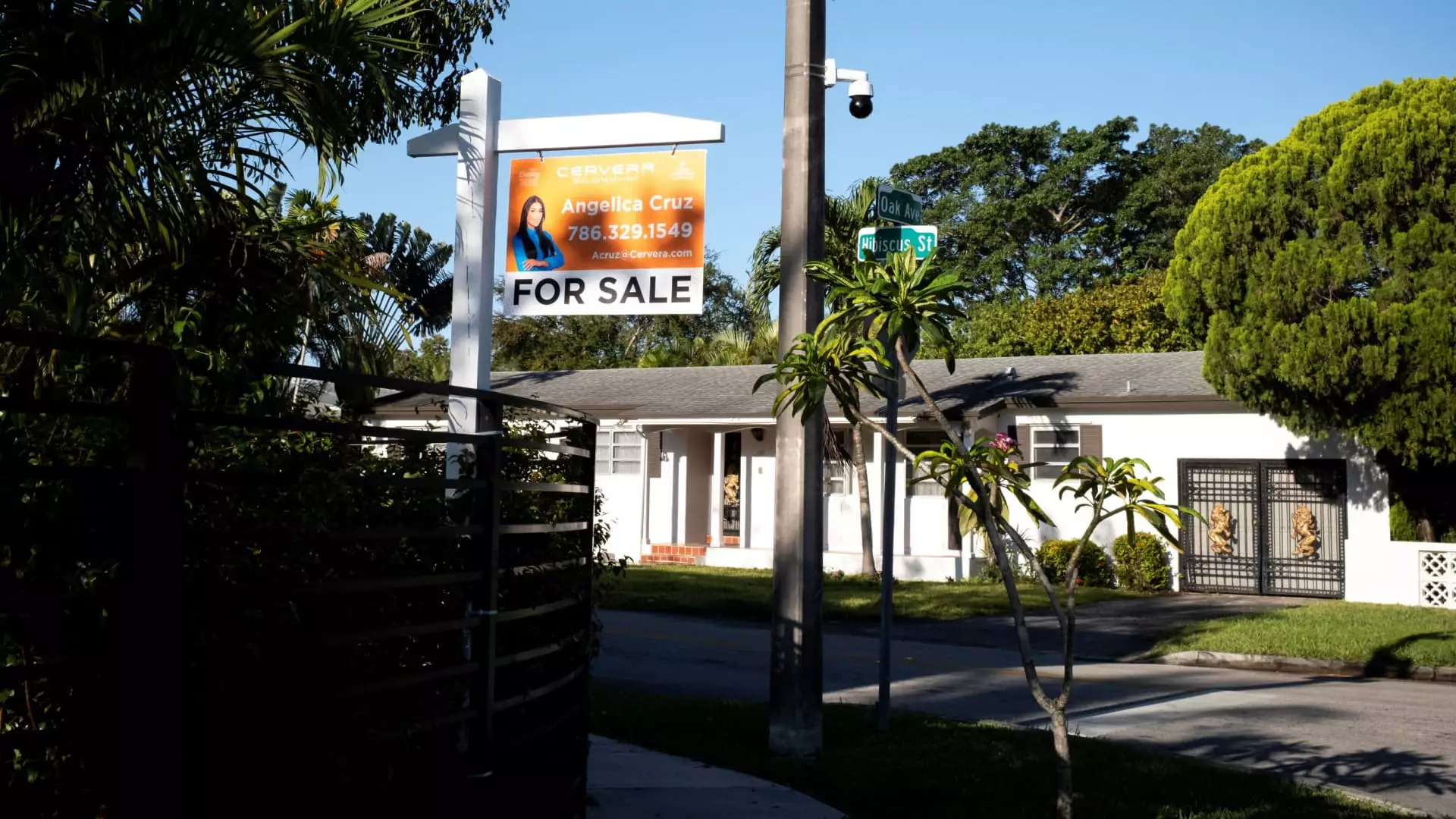The current housing market is grappling under the pressures of relentless increases in mortgage rates, presenting a significant barrier to potential homebuyers. As of March 2024, mortgage rates topped 7%—a threshold that fundamentally deters many from entering the housing market. With the National Association of Realtors reporting a staggering 5.9% decline in sales of previously owned homes, it’s evident that the housing market is not just slowing; it is stalling. This situation isn’t merely an inconvenience; it is a stark indicator of the economic malaise that permeates our nation. A robust economy should empower individuals to invest in property, but the reverse is currently at play, leading to catastrophic stagnation.
Regional Disparities and Economic Mobility
What’s fascinating—and somewhat troubling—is the regional variation in housing market responses. While the West coast saw a greater decline, the Rocky Mountain states displayed unexpected resilience due to strong job growth. This divergence reflects broader economic trends and deepening inequalities among different regions. When housing sales drop across the board, except for a few pockets of strength, it creates an ominous environment for economic mobility.
Lawrence Yun, the chief economist for the NAR, aptly points out that the diminishing ability for individuals to buy or sell homes is symptomatic of a larger issue: reduced economic mobility. The current environment fosters a stagnation that not only traps individuals in their current living situations but also hampers broader economic progress. High mortgage rates have effectively suffocated the mobility that drives economic robustness, throwing into question the very foundation of the American Dream.
Inventory vs. Demand: A Distorted Market
Interestingly, while sales are plummeting, inventory levels have surged nearly 20% year-over-year. This begs the question: Is there truly a demand crisis, or are we witnessing a misalignment in market dynamics? With 1.33 million homes available for sale, we are seeing the potential for a balanced market, yet the sales figures tell a different story. The stark contrast between increasing inventory and decreasing sales indicates that buyers are feeling disheartened by high rates and have opted to wait on the sidelines. This inertia in buyer behavior introduces a chilling factor to pricing; the median price of an existing home, although an all-time high at $403,700, is growing more slowly than in previous months.
Such a landscape should act as a wake-up call to policymakers and real estate stakeholders alike. If the market continues on this path, we risk reaching a point of no return, where the affordability crisis firmly locks out potential buyers and stifles hopes of economic mobility.
The Future Outlook and Investor Psychology
As we peer into the future, the scars of March might only be the beginning. A reported rise in canceled contracts suggests that buyer confidence is faltering amidst stock market volatility. Investors, too, are facing a conundrum. With all-cash sales dropping from previous years, and first-time buyers composing only 32% of the market, the vibrancy that often characterizes a spring selling season is but a shadow of its former self.
The market’s resilience is contingent not merely on the fluctuations of mortgage rates but on the collective psychology of buyers and sellers alike. Economic indicators, from employment figures to stock performance, play essential roles in shaping consumer perceptions. If the stock market continues its erratic behavior, we can anticipate further retreat from potential homebuyers who may perceive the housing market as an ill-timed investment.
Household Wealth and Its Implications
Despite the turmoil, it’s important to recognize that overall household wealth in residential real estate is reportedly at an all-time high. Valuations have reached an astonishing $52 trillion. Still, this wealth does not equate to liquidity for individuals struggling to enter the market, nor does it insulate them from the broader economic issues facing the nation. A house is still just a home for many, a place to create memories rather than an asset on a balance sheet.
The implications are profound: wealth distribution is becoming increasingly uneven, and real estate, once a path to stability, is increasingly seen as a financial gamble. The reality is that while some homeowners are cashing in on their equity gains, too many others are left clinging to property dreams that feel just out of reach due to the oppressive weight of high mortgage rates and economic uncertainty. In a thriving economy, housing serves as a cornerstone of growth and opportunity; today, it is a barometer reflecting stagnation across the market.

